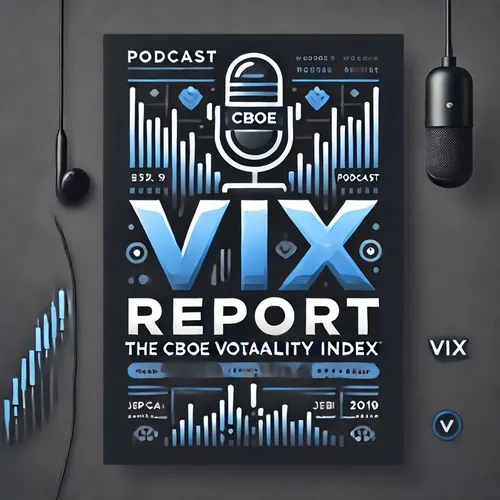Declining VIX Signals Reduced Market Volatility Expectations
- Author
- QP-1
- Published
- Fri 16 May 2025
- Episode Link
- https://www.spreaker.com/episode/declining-vix-signals-reduced-market-volatility-expectations--66114699
The Cboe Volatility Index (VIX), also known as the "fear index," measures market expectations of volatility over the coming 30 days, derived from S&P 500 Index (SPX) options prices. As of the close on May 15, 2025, the VIX stood at 17.83, reflecting a 0.79-point decrease from the previous day, with a percentage change of -4.24% from its May 14th close of 18.62.
This decline in the VIX is indicative of a reduction in anticipated market volatility. The fluctuation in the index over recent days points to shifting market dynamics. Previously, on May 14, 2025, the VIX had increased from 18.22 to 18.62, suggesting heightened market concerns at that time. In contrast, the subsequent drop to 17.83 on May 15 represents a potential easing of risk perception among investors.
The VIX's current level is notably lower than recent peaks, such as the 21.90 registered on May 8, 2025. This previous high indicated significantly higher expected volatility, possibly driven by market uncertainties or negative economic indicators. The drop since then may reflect renewed investor confidence or the stabilization of factors previously contributing to uncertainty.
Market sentiment plays a crucial role in the VIX's behavior. A decreasing VIX suggests that investors might be less risk-averse, potentially due to more favorable economic news, corporate earnings reports, or decreased geopolitical tensions. Conversely, high VIX values usually correlate with market anxiety amid financial instability, macroeconomic concerns, or unexpected global events.
Understanding the VIX involves recognizing its connection to the broader market environment. Current conditions, including interest rate policies, inflation data, and employment figures, significantly influence investor sentiment and, consequently, the VIX. A decrease in the index often correlates with rising equity markets, as lower expected volatility tends to coincide with investor optimism.
Despite short-term fluctuations, the VIX provides a vital gauge for market participants, aiding in risk management and decision-making. Its early-May high suggested a market bracing for uncertainty, perhaps owing to anticipated changes in monetary policy or unforeseen financial disruptions. The subsequent decline to 17.83 may indicate an alleviation of such pressures or a reassessment of perceived risks.
The VIX's settlement process, involving the Special Opening Quotation (SOQ), ensures accuracy by capturing market conditions at the expiration moment. This mechanism reflects
